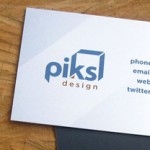Blueprints have been used by architects, engineers, and many areas of industry since the 19th century. They provide information detailing how a structure or object needs to be assembled. As we usually think of blueprints in terms of houses, let’s use that as an analogy as I ask a question. As the architect begins a new home design, does he immediately start picking out carpet and curtain colors? Does he jump right to the shutter style? Does he research what types of ceiling fans are available? Of course not. The structure of the house hasn’t even been determined. It would be a waste of time to focus on decorative details.
A logo has a structural element: the design itself, and a decorative element: the color. That’s not to say color isn’t important! It helps convey strength, softness, and joy. It can indicate environmentalism, tech, or finance. Certain color combinations can event hint at an era in history. But color will always take a back seat to the design itself.
And for this reason, it’s a good practice to create your logo in black and white first. This process will help you in your design process as it makes you focus purely on creating a strong design. There are enough challenges to work through without introducing color into the mix.
But this issue goes beyond your own process. It has everything to do with your client and the approval process. Clients know their business inside and out, but they normally have a tenuous grasp on design—that’s why they hired you. However, they feel very comfortable with color and discussing color. And so when faced with the task of evaluating your concepts, they’re going to jump right to the colors you used.
Is this a bad thing? Yes! Suddenly you find yourself tweaking colors when the topic of the design itself hasn’t even come up. It’s backwards and it’s a waste of time. It may not be until the client decides you have the colors “correct” that they realize they don’t like the design at all. Time wasted! Worse, the client may end up rejecting your proposal altogether based on the fact that they don’t like the colors. Don’t put yourself in a situation where you need to ask them to ignore the colors and only evaluate the design itself. That’s hard to do.
Eliminate color at the start and you eliminate distraction from your design.
Any professional logo should have a one-color version anyway. There are times that’s your only option. Your client will eventually need a one-color version for one purpose or another, whether it be in black or one of their company colors. I recommend creating one for them whether they ask for it or not.
The logo creation process has enough frustrations. Shed one of the potential pitfalls by saving the process of selecting colors until the very end.



